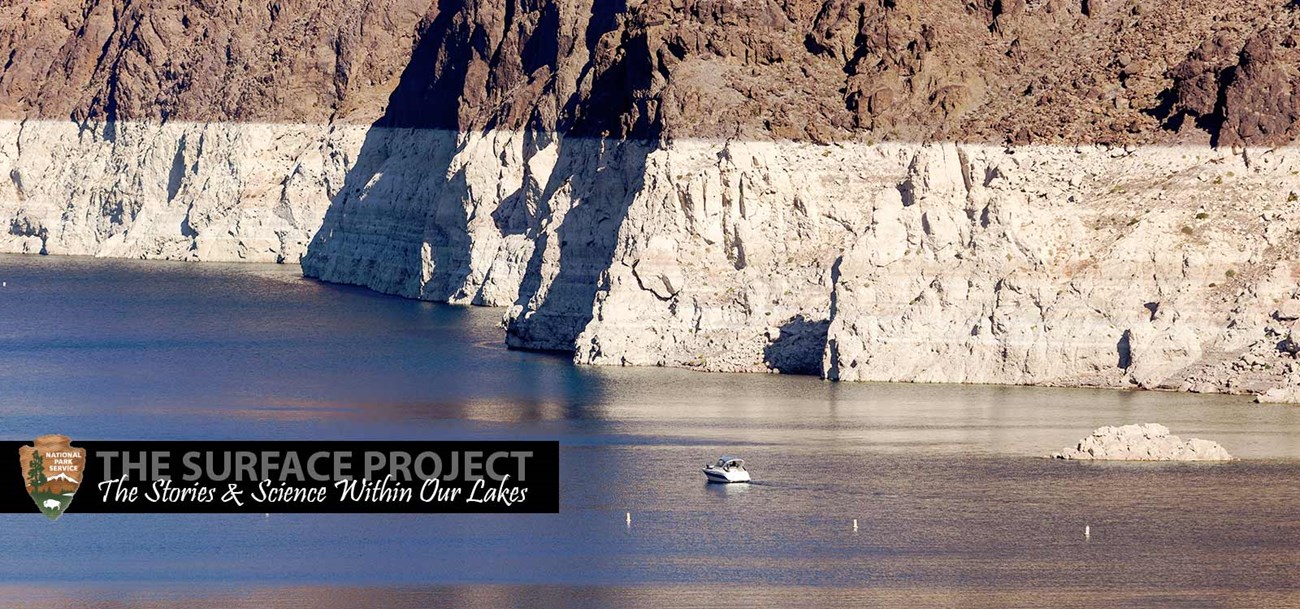
Meet the New Lake MeadIn June 2016 Lake Mead's water level reached a record low. That might be of no surprise to lake visitors, who have probably seen the white ring that traces its rock-walled shoreline. Technically, the white ring around Lake Mead is made of minerals deposited on the rock walls when the lake's water level was higher. But in reality, the ring-line signifies much more than that; it symbolizes a lake in the midst of more than 15 years of drought. The StoryThe unrelenting drought that has plagued the Colorado River Basin for more than a decade is redefining the water resources millions of people depend on, perhaps even ushering in a new reality for water in the west. The water inflow into the Colorado River has been below average for 13 out of the past 16 years, with average water inflow since 2000 just 79 percent of the previous 30-year average. The period 2000-2015 had the lowest water availability of any 16-year period in the last 60 years. 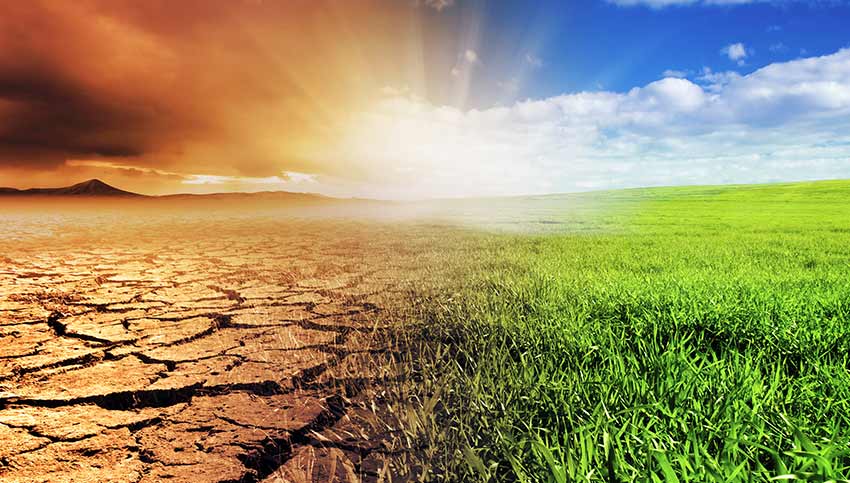
Projections indicate an imbalance in our water supply, and we must rely on human innovation to find solutions that ensure enough water for generations to come. As a result, since 2000 Lake Mead water surface elevation has dropped over 143 feet, going from full to only 38 percent of the total storage capacity. The lower lake level impacts everything from launching boats to lake ecosystems. The net water loss is nearly six trillion gallons of water. The combined reservoirs of the Colorado River overall have gone from being nearly full to containing only approximately 50 percent of overall storage capacity. 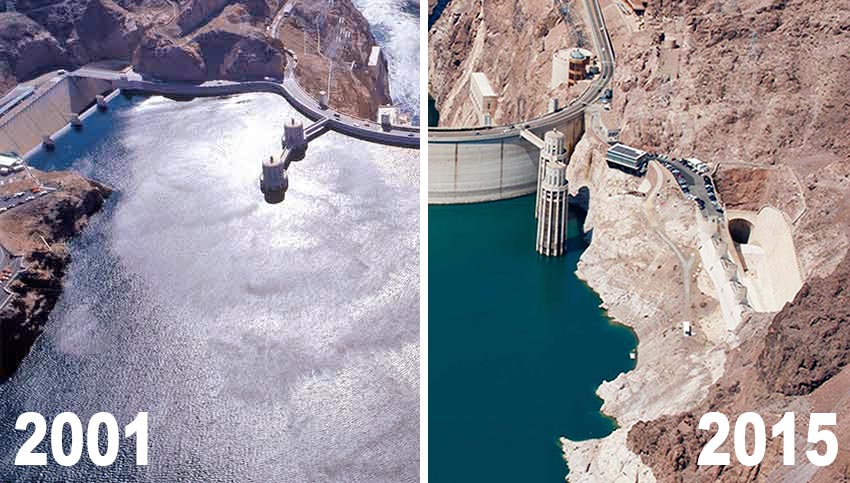
Lake Mead water surface elevation has dropped over 143 feet. While the Colorado River has been affected by previous droughts, a warming climate is predicted to alter the water cycle in new ways. Long range climate predictions are for warmer winter temperatures in the Southwest, less snowpack in the Rocky Mountains, and less melted snow able to find its way into the Colorado River. Projections for the future indicate that an imbalance in the system will persist: there will not be enough water naturally coming into the system to replenish what we are removing. This has prompted water managers from the seven Colorado River Basin states as well as Department of the Interior to develop a comprehensive study looking in detail at water supply and demand over the next 50 years. That study found that by 2060 the use demand on the Colorado River will be greater than the projected supply by 3.2 million acre feet (that’s enough water for approximately 16 million people for one year). 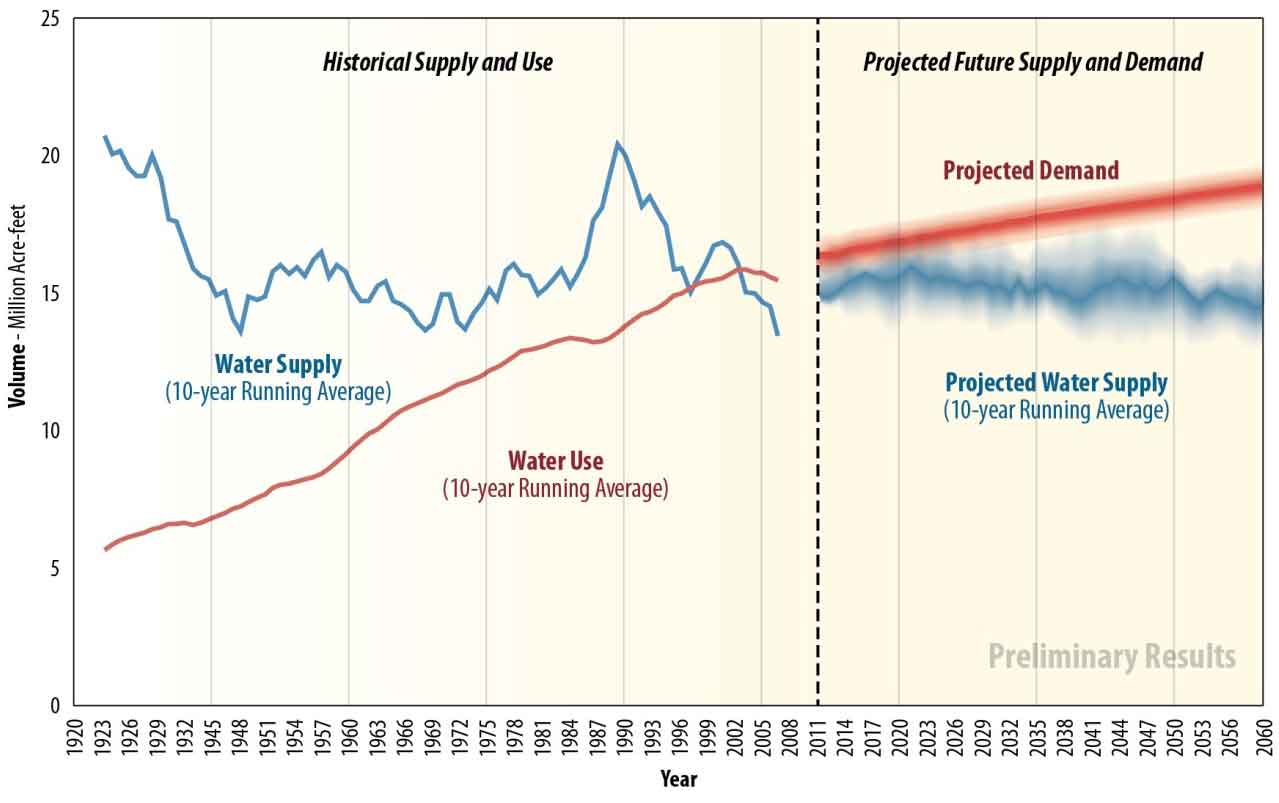
Graph from U.S. Bureau of Reclamation Colorado River Basin and Demand Study showing trends in water supply and demand. The Colorado River Basin Supply and Demand Study not only projects future demands and water supplies, but evaluates a wide array of water use practices, and brings water managers and users together to develop proposed solutions to ensure there is enough water for generations to come. Solving the challenges of water sustainability presents a question: How do we increase the water supply and manage the demand for water resources in the driest part of the country? Building upon the Basin Study, scientists, analysts, managers, historians, engineers, and the public have explored ways that, if combined, could yield over 4,000,000 acre-feet of water by 2035 (that is more than a trillion gallons). However, these methods can be expensive and time-consuming, and they are not always environmentally friendly. Balancing the need for water with the cost of providing enough water is a problem that will not quickly go away. But along the way, amazing feats in scientific engineering and innovation will emerge and the human ability to cooperate, compromise and solve problems can persevere. Closing the Gap Between Supply and DemandSave Water
Find Water
Through the Colorado River Basin Water Supply and Demand Study (2012), the Bureau of Reclamation, who manages Colorado River water operations, has been conducting collaborative studies with the seven Colorado River basin states and a variety of partners, to measure how a changing climate influences water supplies and help ensure sustainable water supplies by identifying ways to address imbalances in water supply and demand. This table represents some of those findings. Education CornerEvery Drop: Lake Mead's Water Budget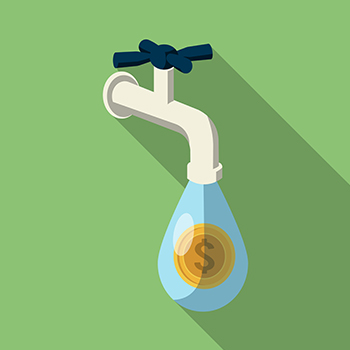 The persistent drought plaguing the Southwest shows no signs of slowing. Water managers, farmers, engineers and residents are re-envisioning the way water is used, re-used, stored and moved. One useful tool that managers use to understand their water use is a water budget. Think of a water budget in much the same way your own budget is used to manage money — there are water deposits, withdrawals, and even savings. For Lake Mead, low water levels mean the water deposits do not always equal water withdrawals, and as savings shrink, managers are working hard to balance the budget. Read MoreGoing DeeperClimate Change: Happening Near You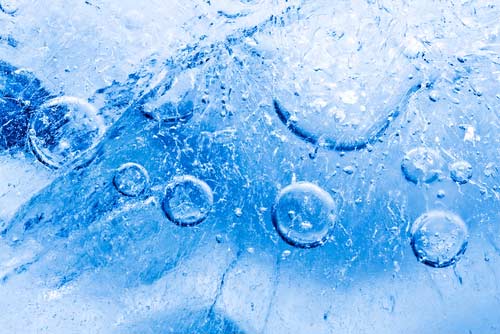
Air bubbles trapped in ice contain traces of carbon dioxide. Scientists have observed the climate is changing in many ways — through more intense weather events, rising temperatures across the globe, shrinking ice sheets and glaciers and rising levels of carbon dioxide. By studying air bubbles trapped in ice, scientists can determine how much carbon dioxide was in the air when the ice was formed. Even further, they can identify the type of carbon dioxide by studying its unique signature, or "isotopes". This signature tells scientists whether the carbon dioxide is from a natural process or from the burning of fossil fuels (like the gas we use in our cars). Researchers from the National Snow and Ice Data Center (NSIDC) also use data on the size and volume of sea ice and glaciers to calculate where the ice is thinning and how vulnerable it is to further melting. In the Southwest deserts, historic temperature readings and data, such as stream flows, help determine how the climate has changed. These real world measurements coupled with computer models help make predictions about what the future may hold for our climate. Read More |
Last updated: April 4, 2017
